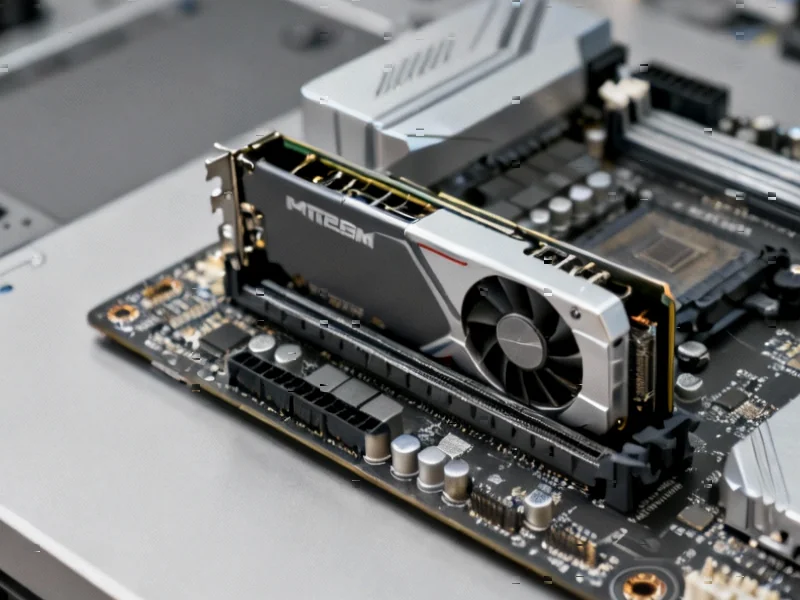According to Wccftech, AMD has officially moved its RDNA 1 and RDNA 2 GPU architectures to maintenance mode with the latest Adrenalin Edition 25.10.2 driver release. This means Radeon RX 5000 series (launched in 2019) and RX 6000 series (2020) will no longer receive game-specific optimizations or new feature updates, receiving only critical security fixes and bug resolutions going forward. The confirmation came after PC Games Hardware noticed that the latest driver’s game support and Vulkan extensions were exclusively targeted at RDNA 3 and RDNA 4 GPUs. This policy shift affects even recent RX 6000 variants like the RX 6750 GRE launched in 2023, raising questions about AMD’s long-term support strategy for graphics products. This move represents a significant change in how AMD manages its GPU driver lifecycle.
Table of Contents
The Technical Reality of Maintenance Mode
When a GPU architecture enters maintenance mode, the implications extend far beyond simply missing out on the latest game optimizations. Modern game engines increasingly rely on driver-level optimizations to extract maximum performance from specific hardware architectures. Without these tailored optimizations, RDNA 1 and RDNA 2 owners may notice performance degradation in future game releases as developers target newer architectures. The RDNA architecture represented AMD’s first major departure from GCN, introducing a completely new compute unit design that initially required extensive driver refinement to reach its potential. Now that development focus has shifted entirely to RDNA 3’s chiplet design and whatever innovations RDNA 4 will bring, older architectures become frozen in time from a performance optimization perspective.
Market Context and Competitive Landscape
AMD’s accelerated driver support timeline stands in stark contrast to NVIDIA’s historical approach to GPU lifecycle management. NVIDIA maintained feature-level driver support for its Maxwell architecture for approximately seven years and continues to provide security updates for even older architectures. This discrepancy creates a significant competitive consideration for consumers weighing long-term value between AMD and NVIDIA GPUs. The timing is particularly noteworthy given that AMD’s Radeon division has been gaining market share through competitive pricing and strong performance in the mid-range segment. This driver policy shift could undermine that momentum if consumers perceive reduced long-term value in their purchases.
Consumer Trust and Upgrade Cycle Implications
The most concerning aspect of this announcement isn’t the technical limitations but the precedent it sets for consumer expectations. When customers invest hundreds of dollars in a graphics card, they reasonably expect several years of full software support, particularly for products like the RX 6750 GRE that launched less than two years ago. This move creates legitimate concerns that AMD might apply similar abbreviated support timelines to current RDNA 3 products when RDNA 5 or later architectures arrive. The original reporting from PC Games Hardware highlights how quickly AMD is moving older architectures to maintenance status compared to historical norms in the industry.
The Business Reality Behind Driver Development
From a development resource perspective, maintaining multiple architecture branches becomes increasingly complex and expensive over time. Each new AMD GPU generation introduces architectural changes that require dedicated optimization work, and supporting four active architectures (RDNA 1-4) represents a substantial engineering burden. The shift toward maintenance mode for older products reflects the practical reality that driver teams must prioritize resources where they’ll have the greatest impact on current sales and market positioning. However, the abrupt nature of this transition—particularly for recent RX 6000 series variants—suggests AMD may be reallocating resources more aggressively than in previous generations.
Looking Ahead: What This Means for GPU Buyers
This policy shift should inform future purchasing decisions for PC enthusiasts and gamers. Consumers who prioritize long-term software support may need to factor driver lifecycle into their buying calculus alongside traditional metrics like price-to-performance ratios. The move also signals that AMD is positioning its graphics division for more rapid architectural iteration, potentially bringing more frequent meaningful performance improvements but at the cost of shorter full-support windows. As the graphics card market continues to evolve, understanding a manufacturer’s support philosophy becomes as important as understanding the hardware specifications themselves.



